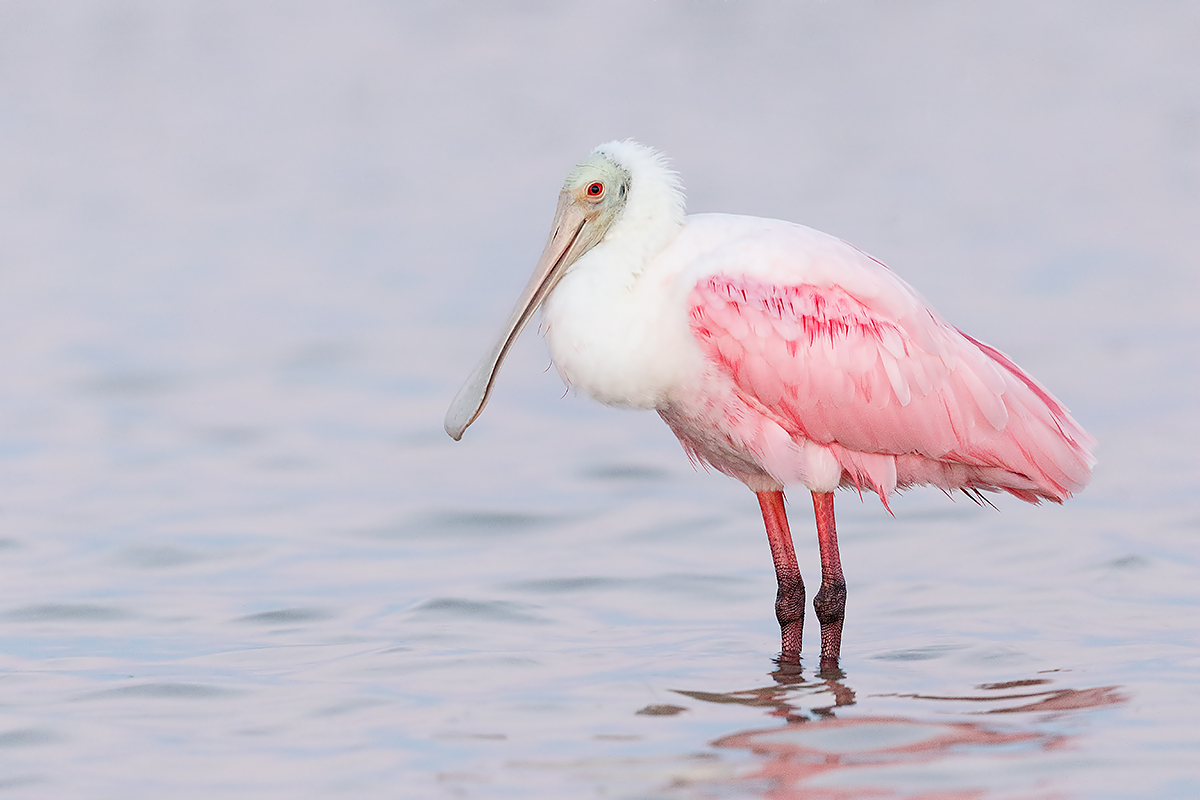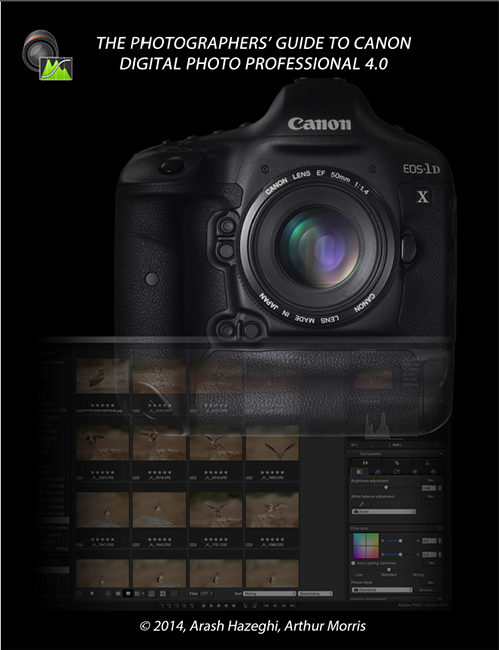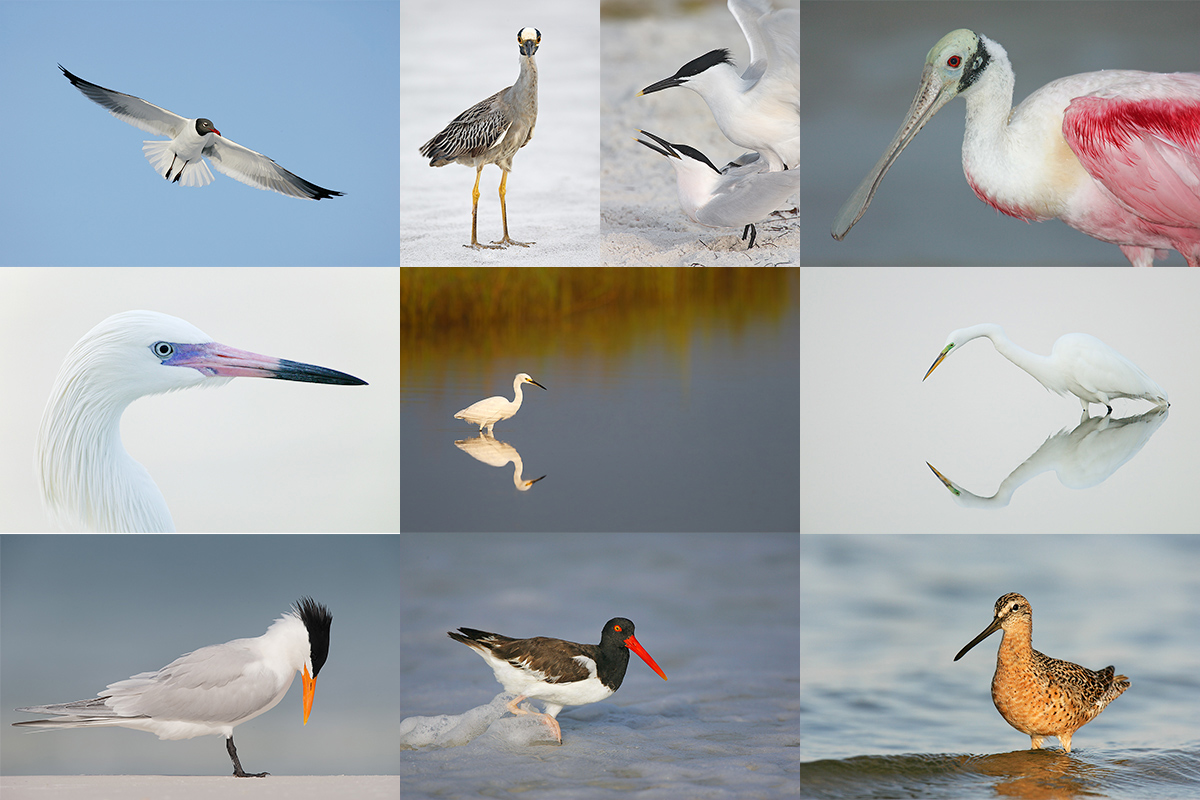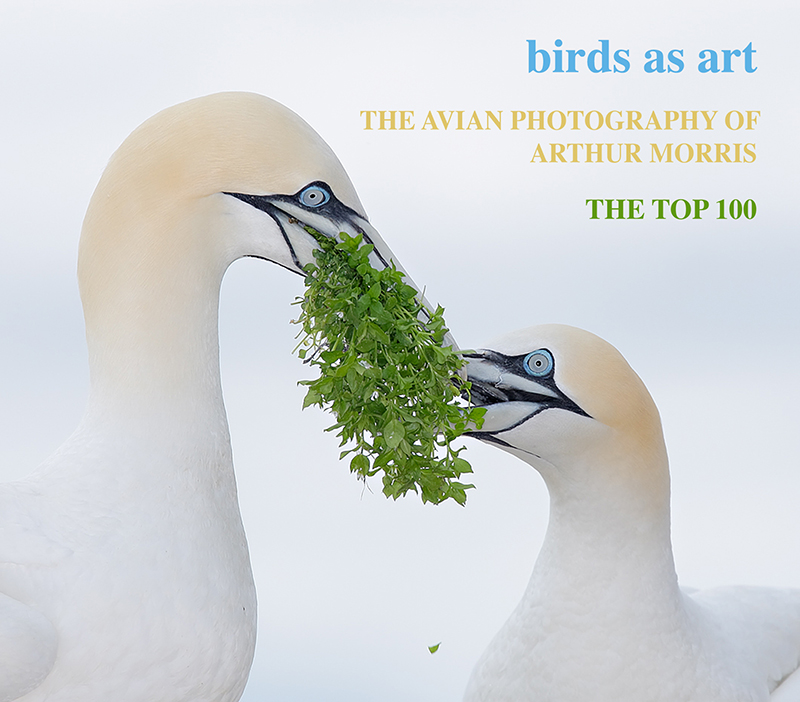What’s Up?
Me very early again… I prepared this blog post in exactly one hour, finishing up just before 4am on Thursday morning. Jet lag has gotten the best of me; yesterday was the first time that my afternoon jet lag nap (4 hours) was longer than my evening sleep (3 1/2 hours). Right now my plan is to load up the car and head to Gatorland for a few hours to see how the nesting Great Egrets are doing.
600 II
I still have a Canon 600 II in excellent plus condition for a Canadian buyer at a ridiculously low price. Please contact me via e-mail if you live in Canada and are interested.
The Streak
Today’s blog post marks 121 days in a row with a new educational blog post. As always–and folks have been doing a great job recently–please remember to use our B&H links for your major gear purchases. For best results use one of our many product-specific links; after clicking on one of those you can continue shopping with all subsequent purchases invisibly tracked to BAA. Your doing so is always greatly appreciated. Please remember: web orders only.
|
This image was created at Fort DeSoto with the Induro GIT 304L/Mongoose M3.6-mounted Canon EF 600mm f/4L IS II USM lens and the amazing Canon EOS 7D Mark II. ISO 3200. Evaluative metering +1 1/3 stop: 1/200 sec. at f/4.5 in Av mode. AWB. Center AF point/AI Servo Expand/Rear Focus AF on the bird’s eye and re-compose. Click here to see the latest version of the Rear Focus Tutorial. Click on the image to see a larger version. Roseate Spoonbill in non-breeding plumage |
Pink Possible 365 or 366
I have written often over the years that Fort DeSoto is about the only spot that I know of that has the potential to offer great bird photography 365 day a year, or 366 days in a leap year like 2016. Not to say that it will be great every day, but the potential for greatness exists no matter the season. In the same vein, it is also possible to photograph Roseate Spoonbill on any given day at any season. The trick to maximize these opportunities is to be in the right spots and to arrive very early and stay very late.
7D II ISO 3200
I converted the RAW file for today’s featured image in DPP 4 with Click White Balance and used Arash Hazeghi’s Luminance and Chrominance values from our DPP 4 RAW Conversion Guide. Regular readers know that since I expose well to the right that I am rarely concerned with noise. I am currently editing Arash’s latest effort, the Post Processing Guide. The main thrust of the book deals with Arash’s high level noise reduction techniques using NeatImage. Arash recommends and uses only the NeatImage plug-in for advanced noise reduction to maintain maximum fine detail in his images. Both artie and Arash recommend only the Proversion as the Homeversion does not work on 16-bit images.
While Arash is a brilliant scientist and a brilliant photographer, writing clear and easy to understand how-to is not his forte; that is why we team up on these e-books. For the past few days I have been working hard at re-crafting his section on noise reduction. I am almost there. I did feel comfortable enough with what I have learned about the NeatImage plug-in so far to run it on today’s image. Though my efforts were surely crude, I was quite impressed with the results on this 7D II ISO 3200 image. We hope to be finished with the guide within about two weeks.
|
You can order your copy of “The Photographers’ Guide to Canon Digital Photo Professional 4.0” (aka the DPP 4 Raw Conversion eGuide) by Arash Hazeghi and Arthur Morris by clicking here. |
The DPP 4 eGuide (PDF)
The RAW file for today’s image was of course converted in DPP 4. Learn how and why I and many other discerning photographers choose and use only DPP 4 to convert their Canon RAW files in the DPP 4 RAW Conversion Guide by Arash Hazeghi and yours truly. The latest version supports all of the newer Canon camera bodies and several older models including the EOS-7D and the EOS-1D Mark IV. The DPP IV Guide is the ideal companion to the 7D Mark II User’s Guide, a runaway best seller.
The DPP 4 eGuide (PDF) Updated for 1D Mark IV and the original 7D
The DPP 4 eGuide was updated a while back to include the luminance and chrominance noise reduction values for both the 1D Mark IV and the original 7D. If you purchased your copy from BAA please e-mail Jim and request the DPP 4 1d IV/7D update. Please be sure to cut and paste page 1 into your e-mail as proof of purchase.
DPP 4 Kudos
From Richard Gollard via e-mail:
I have been doing tons of studying the books and PDFs that I have purchased from BIRDS AS ART. And I have to say that after reading the DPP 4 conversion guide that you did with Arash Hazeghi I tried DPP 4 and was blown away by the differences in the conversions that I made with Adobe Photoshop and Lightroom. Thanks for the consistently great information.
Photographing at the Beach?
Check out the new Beach Stuff page by clicking on the tab in the middle of the upper yellow/orange menu bar at the top of each blog page. You can learn about both surf booties and Wheeleeze. Do note that the link for the Used Photo Gear page has moved to the left end of the second line of the menu bar.
Fort DeSoto Site Guide
Whether you are soon going to be a first time visitor or you live just up the block you will learn a ton by getting yourself a copy of the Fort DeSoto Site Guide. Learn the best spots, where to be when in what season in what weather. Learn the best wind directions for the various locations. BAA Site Guides are the next best thing to being on an IPT. You can see all of them here.
|
DeSoto in spring is rife with tame and attractive birds. From upper left clockwise to center: breeding plumage Dunlin, dark morph breeding plumage Reddish Egret displaying, breeding plumage Laughing Gull/front end vertical portrait, breeding plumage Laughing Gull with prey item, Laughing Gull on head of Brown Pelican, screaming Royal Tern in breeding plumage, Royal Terns/pre-copulatory stand, Laughing Gulls copulating, breeding plumage Laughing Gull/tight horizontal portrait, Sandwich Tern with fish, and a really rare one, White-rumped Sandpiper in breeding plumage, photographed at DeSoto in early May. |
Fort DeSoto IPT: May 10-13, 2016. 3 1/2 DAYS: $1399
Meet and Greet at 3pm on Tuesday May 10.
Fort DeSoto is one of the rare locations that might offer great bird photography 365 days a year. It shines in spring. There will Lots of tame birds including breeding plumage Laughing Gull and Royal and Sandwich Terns. With luck, we will get to photograph all of these species courting and copulating. There will be American Oystercatcher and Marbled Godwit plus sandpipers and plovers, some in full breeding plumage. Black-bellied Plover and Red Knot in stunning breeding plumage are possible. There will be lots of wading birds including Great and Snowy Egrets, both color morphs of Reddish Egret, Great Blue, Tricolored and Little Blue Heron, Yellow-crowned Night-Heron, and killer breeding plumage White Ibis. Roseate Spoonbill and Wood Stork are possible and likely. We should have lots of good flight photography with the gulls and terns and with Brown Pelican. Nesting Least Tern and nesting Wilson’s Plover are possible.
We will, weather permitting, enjoy 7 shooting sessions. Our first afternoon session will follow the meet and greet on Tuesday May 10. For the next three days we will have two daily photo sessions. We will be on the beach early and be at lunch (included) by 11am. At lunch we will review my images–folks learn a ton watching me choose my keepers and deletes–why keep this one and delete that one? If you opt to bring your laptop, we will be glad take a look at a few of your best images from the morning session. We will process an image or two in Photoshop after converting them in DPP. Our lunch learning session will be followed by a break that for me will include Instructor Nap Time. Afternoon sessions will generally run from 4:30pm till sunset. We photograph until sunset on the last day, Friday the 13th… Please note that this is a get-your-feet and get-your-butt wet and sandy IPT. And that you can actually do the whole IPT with a 300 f/2.8L IS, a 400 f/4 ID DO lens with both TCs, or the equivalent Nikon gear. I will likely be using my new 500 II as my big glass and have my 100-400 II on my shoulder.
|
DeSoto in spring is rife with tame and attractive birds. From upper left clockwise to center: Laughing Gull in flight, adult Yellow-crowned Night-Heron, copulating Sandwich Terns, Roseate Spoonbill, Great Egret with reflection, Short-billed Dowitcher in breeding plumage, American Oystercatcher, breeding plumage Royal Tern, white morph Reddish Egret, and Snowy Egret marsh habitat shot. |
What You Will Learn
You will learn to approach free and wild birds without disturbing them, to understand and predict bird behavior, to identify many species of shorebirds, to spot the good situations, to understand the effects of sky and wind conditions on bird photography, to choose the best perspective, to see and understand the light, to get the right exposure every time after making a single test exposure, and to design pleasing images by mastering your camera’s AF system. And you will learn how and why to work in Manual mode (even if you are scared of it).
The group will be staying at the Magnuson Hotel/Marina Cove, 6800 Sunshine Skyway Lane South, St. Petersburg, FL, 33711. Tel: 727-867-1151. I use Hotels.com. The best airport is Tampa (TPA). A deposit of $499 is required to hold your spot. Your balance will be due on March 10, 2016. Please call Jim or Jennifer at 863-692-0906 to register. The $5 park entry fee is on you. Tight carpools are recommended. The cost of three lunches is included. Breakfasts are grab what you can on the go, and dinners are also on your own due to the fact that we will usually be getting back to the hotel at about 9pm. Non-photographer spouses, friends, or companions are welcome for $100/day, $350 for the whole IPT.
Why Join an IPT?
For many folks, hands-on, in-the-field instruction is the very best way for them to learn to improve their skills… To see some more early spring DeSoto images, click here.
Shorebirds/Beautiful Beachcombers
If shorebirds give you pause, get yourself a copy of my Shorebirds/Beautiful Beachcombers. Includes ID tips, shorebird biology, migration, and tons more. All in my simple-to-read easy-to-understand style.
birds as art: The Avian Photography of Arthur Morris/The Top 100
|
From Rod Anton via e-mail
Dear Artie, Beyond the superlatives you have received for your beautiful presentation, all of which I agree with whole heartedly, I would like to add my thoughts about your exhibition. I see the dedication, the determination, the passion and the tenacity that drives you, as well as your love of the birds and of your love of photography. Congratulations. The exhibit-companion CD deserves a shout out. Sincerely, Rod Anton
Please Remember to use our Affiliate Links 🙂
To show your appreciation for my continuing efforts here, we ask, as always, that you get in the habit of using my B&H affiliate links on the right side of the blog for all of your photo and electronics purchases. Please check the availability of all photographic accessories in the BIRDS AS ART Online Store, especially the Mongoose M3.6 tripod heads, Gitzo tripods, Wimberley heads and plates, LensCoats and accessories, and the like. We sell only what I have used, have tested, and can depend on. We will not sell you junk. We know what you need to make creating great images easy and fun. And we are always glad to answer your gear questions via e-mail. I just learned that my account was suspended during my absence; it should be up and running by Monday at the latest.
I would of course appreciate your using our B&H affiliate links for all of your major gear, video, and electronic purchases. For the photographic stuff mentioned in the paragraph above we, meaning BAA, would of course greatly appreciate your business. Here is a huge thank you to the many who have been using our links on a regular basis and visiting the BAA Online store as well.
Be sure to like and follow BAA on Facebook by clicking on the logo link upper right. Tanks a stack!
Typos
In all blog posts and Bulletins, feel free to e-mail or to leave a comment regarding any typos or errors. Just be right 🙂



















Thanks for naming the birds on your cards of Ft. Desoto. It helps for those of us learning identification.
Such an incredible photo!
Artie, I’m contemplating upgrading my “old” Canon 100-400. I thought I would replace it with the 100-400 Mark II, but I’m wondering if my better bet, for bird photography alone, might be to buy one of the used original 400 DO lenses that are being offered on your used gear page. I’m looking for something that I can use on the move. I don’t necessarily need the versatility of the new 1-4. I just want image quality, reach, hand-holdability, and under $3000. I live in Ohio, and shoot mostly wild, not very tame birds. This will be my main lens for bird photography. What do you think?
Thanks for your recommendation with the 7dMarkII. It’s what I’ll attach my main bird lens to. I ordered through your B&H link within an hour of announcement and have thoroughly enjoyed it!
-Tom
I think that it is an excellent plan. You can add a 1.4X II TCfor lots of reach at f/5.6
Best of luck, artie
ps: Tom Blackman’s may be sold so take a good luck at Donna Bourdon’s lens.
This is the kind of image I aspire to capture. I love everything about it.
Light , colour ,head angle and composition.
Just a hint of focus on the water as well to give a little context but no background distractions at all.
Inspiring, thanks Artie.
David
Thanks David, And to think, 7D II ISO 3200…
Hope that all is going well.
later and love, a